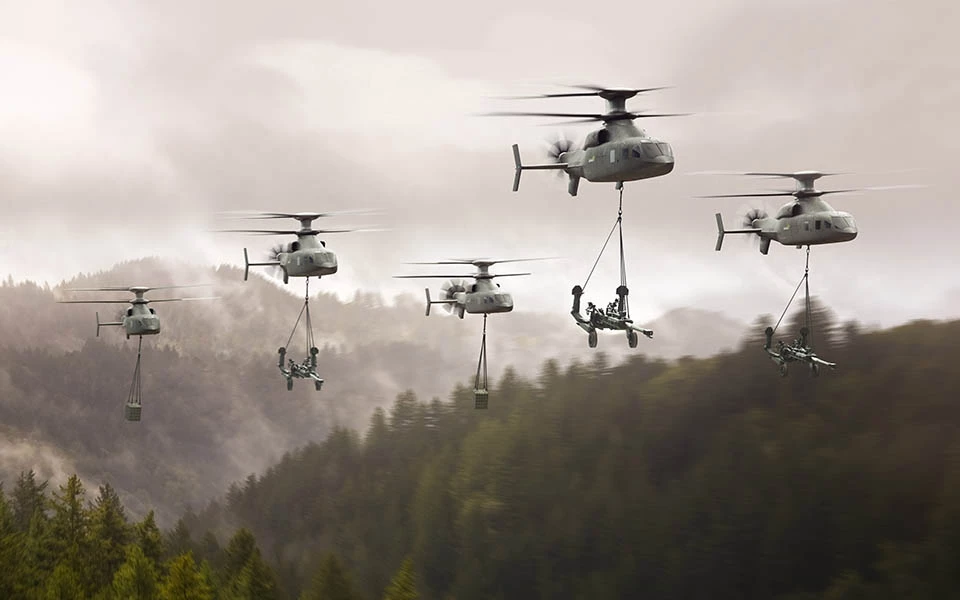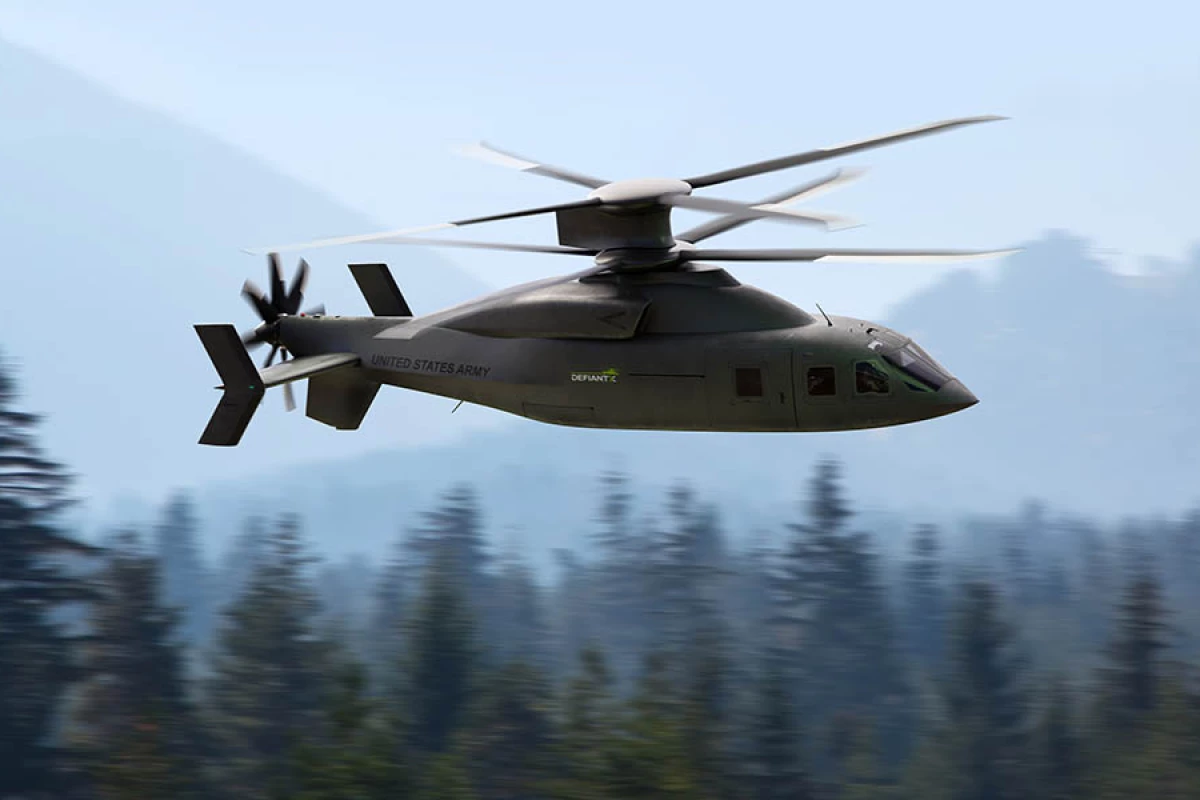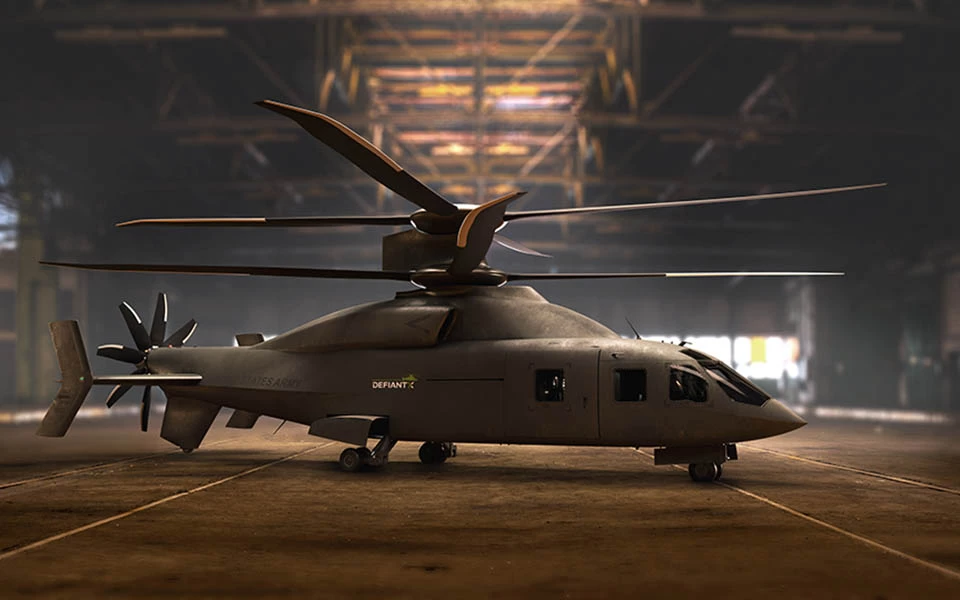Lockheed Martin and Boeing have taken the wraps off the Defiant X advanced military helicopter being developed for the US Army's Future Long-Range Assault Aircraft (FLRAA) competition. Billed as the fastest, most maneuverable, and most survivable assault helicopter in history, it is based on the team's SB>1 Defiant demonstrator prototype.
The goal of the FLRAA competition is to produce a medium-class multi-role assault helicopter with twice the speed and range of current designs. The Defiant X uses coaxial main rotors and a rear-mounted pusher prop. These eliminate the risk of retreating blade stall and uneven lift forces at high speeds found in single rotor designs. At low speeds, the coaxial rotors allow the craft to retain good handling characteristics.
Designed to replace the Black Hawk helicopter, the Defiant X looks very similar to its SB>1 Defiant predecessor, with the same basic layout, though the nose is sharper, the airframe more aerodynamic, and the engine nacelle has been refined to reduce its thermal signature. The purpose is to create a stealthy, fast, well-armed helicopter that can maneuver at high speeds and enter hostile territory at low altitude to deliver or extract troops and equipment at a designated area.

The partners are keeping technical data to a minimum, so it isn't known yet whether the T55 engine has been replaced with a more advanced turbine. If that is the case, the Defiant X could be able to fly 100-knots (115 mph; 185 km/h) faster than conventional rotorcraft with 60 percent more range and 50 percent improved performance in hot-hover maneuvers.
The Defiant X is designed to provide improved capabilities with the same footprint as the Black Hawk, the same close-formation flying, and with minimal alteration of current tactics, techniques, procedures, training, or infrastructure.
The helicopter is currently being tested in a digital combat environment while contracts arising from the FLRAA competition are expected to be awarded in 2022. If selected by the Army, the Defiant X will enter service somewhere around 2035.
The video below introduces the Defiant X.
Sources: Lockheed Martin, Boeing






